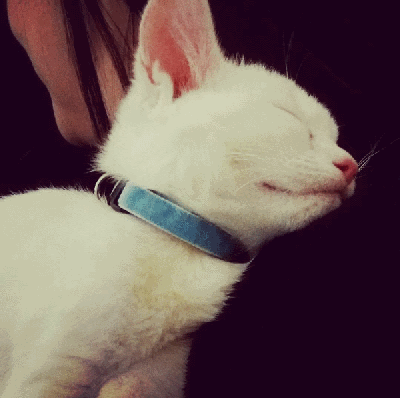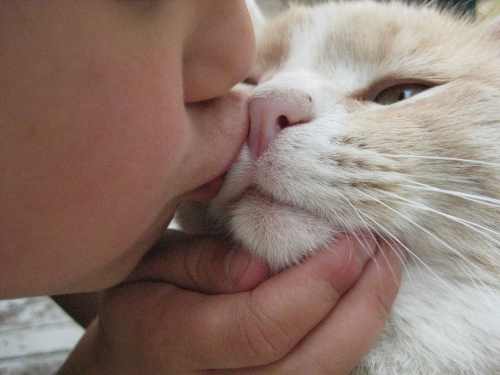Why should I get my cat microchipped? Well, microchipping your cat will help you find your cat if they are lost and end up at an animal shelter.
Over 100 000 cats go missing from their owners per year. Almost half of those cats are reunited with their owners after they are identified by their microchip.
No longer does your cat need to wear a collar with an identification tag to be identified if they have been lost.
I know I would feel bad with my family pet roaming free outside and yet imprisoned by a collar, constantly around their neck. There’s also the worry that your cat will get their collar snagged on a branch, removed by someone or, do what mine do, and just find a way to lose it!
Even if your cat stays indoors, microchipping them will give you that extra bit of reassurance should they get outside. They would likely be in an environment that is unfamiliar and may cause them to then find themselves lost.
A microchip gives them freedom from this purgatory and gives you some piece of mind.
What Is Microchipping And How Does This Relate To My Cat?

A microchip is inserted between the shoulder blades of your cat by a veterinarian or another qualified person.
The microchip is tiny, smaller than a grain of rice. It causes very little discomfort to your pet and is very quick to administer through an injection.
A vet or RSPCA Inspector can use a special scanner to identify your pet. The microchip has a unique 15 digit number and you, as your cat’s owner’s, can place your contact details against this unique number on a database. The largest of these databases is Petlog.
There are different databases, but they are all linked and searchable between each other. You can check these details online and even change them to update your address or change the owner’s name. The microchip does not act as GPS tracker.
Microchip Cat Cost

Microchipping your pet should only cost you between £10-30. You may be able to have this done for free by your local Cat Protection branch. Considering the amount, I’m sure you spend on your cat, this won’t be very much, in the grand scheme of things.
Is Having Your Cat Microchipped Compulsory In UK?
Whilst it is a legal requirement to have your pet dog microchipped, as of April 2016 and you may face a fine of up to £500 if you fail to do so, it is not compulsory to microchip your cat. However, it is strongly advised that you have your cat microchipped as it helps them to be returned safe and sound, instead of being stuck in a cat shelter and then possibly rehomed.
If your cat does go missing, you should notify the local vet practices and the database your cat is registered on. Cat charities and animal welfare groups feel strongly that microchipping should be made compulsory, as it is for dogs. So much so, there is a National Microchip Month every June to raise awareness of this issue.
Ownership Disputes
Cats can also be the centre of custody battles, sometimes very costly ones, when they end up lost and are taken in by well-meaning new owners, or even just stolen. In these cases, a cat’s microchip can be used to identify the owner of the cat and settle these disputes.
Other Benefits To Having Your Cat Microchipped

Not only does having your cat microchipped make them much easier to identify in case they get lost, but there are other advantages. There are a range of clever products available that make use of the microchipping of pets.
Microchip Cat Flaps
Microchip cat flaps scan you cat in the same way they are scanned by your vet with their special scanner. By recognising your cat, they will be granted entry through the microchip cat flap and into your home. Stray cats will not be able to enter, as their microchip will not be recognised.
I really think microchip cat flaps are a great idea and worth considering if you don’t have a cat flap or have a more conventional one. Microchip cat flaps give your cats the freedom to come and go as they please, whilst keeping out stray cats or neighbouring cats that may harass yours, as cats can do sometimes when they are in each other’s territory.
I’m sure many of us have worried from time to time about our cats getting into a scrape with other cats and want to keep them safe and stress free. I believe a microchip cat flap can be part of that. You can read my review of the best-selling microchip cat flap here.
Microchip Cat Feeders
If you have more than one cat, a microchip cat feeder can be used to stop them from stealing food from each other and make sure they all get enough to eat.
Just like the microchip cat flap, microchip cat feeders read your cats’ microchips and allow which cats can eat, selectively. This is especially useful if other cats are eating one of your cats’ food and they aren’t eating enough or maybe they require their own special food for dietary reasons.
I think these microchip cat feeders are really useful and the lid that covers the food also keeps the food fresher for longer and can stop a young child or toddler from getting to your cat’s food.
Conclusions

Getting your cat, or any other pet of yours for that matter, microchipped is a no brainer. The procedure implanting the microchip is simple, quick and costs very little.
If your cats are like mine, they’ll go missing from time to time. A microchipped cat be identified using a special scanner by a vet or someone at a cat shelter and returned to you.
Whilst a microchip is no guarantee your lost pet will be returned to you safe and sound, losing a cat can be heart breaking and a microchip helps stopping this from happening.
Having your cat microchipped also lets you take advantage of ingenious products like microchip cat flaps and microchip cat feeders that can be of great benefit to your cats. Sign up here for my guide to getting a microchip cat flap, from choosing one to having it working in your home.
About The Author
Sean Dean is a cat lover first and the owner and author of TopCatFlaps.co.uk second. He has a passion to use his experience looking after cats to help and inform others about keeping their cats safe and sound, especially with microchip cat flaps. Sean hates talking about himself in the third person, but can be convinced to do so from time to time. Please visit Sean at http://topcatflaps.co.uk/.







